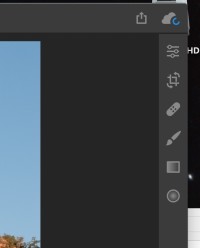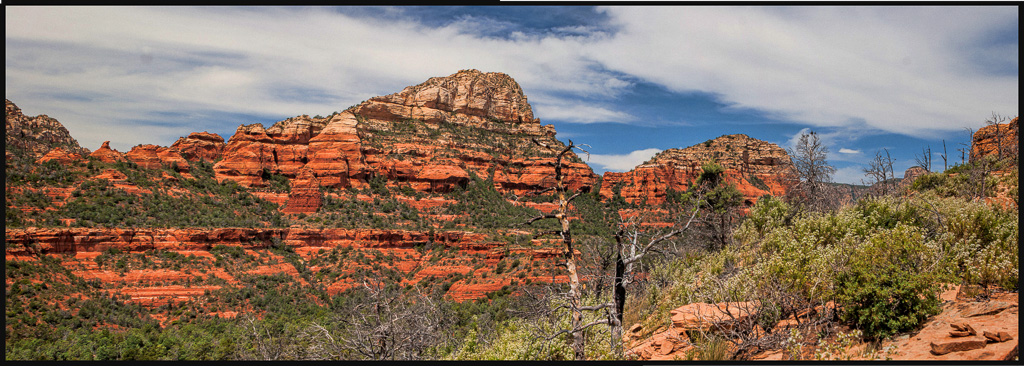As a quasi-serious photographer, I have at multiple times posted about the trials and tribulations of photo management, here, here, and here as I struggled with the zigging and zagging that Apple has done on native photo management on OSX. The net result was me going all in on Adobe Lightroom that I got as part of my Photographers Bundle from Adobe. It is an amazingly powerful package with many built in capabilities that are immensely useful, and it got me completely out of the iPhotos/Aperture/Photos morass.
I also did a little diversion into the Google world with the now defunct Picasa, shudder no, Google photos is not a product that I am willing to use. They already can mine too much of my data, no need to add a couple hundred gigabytes of personal information, thankyouverymuch.
Recently, Adobe has launched a new version of Lightroom, called Lightroom CC (and the older version remains, but is rebranded “Lightroom Classic”) that offers a desktop, web, and mobile solution, using their cloud as the storage. The cost is reasonable (about $7 a month more than the Photographer bundle) and it grants 1 TB of storage. I had been somewhat using this, as you could sync photos from the older version of Lightroom with their cloud (20GB free), and they magically appear on the free apps on my iPad and iPhone. But not seriously using the “cloud” solution, as it was somewhat cumbersome, and to be honest, the stand alone Lightroom seemed to not stay logged in.
In the interim, I got an invitation to participate in a product survey, as they were assembling the new product, and as I ws going through this survey, I kept nodding my head, “Hell Yeah” I would like the product they were offering, and I saw the value in it, even for me, as a semi-serious hobbyist. When the announcement came I jumped at the opportunity. There was a discount for existing “Photography Bundle” customers for the first year, an even better enticement.
Needless to say, I took the plunge.
First Impressions
The UI is greatly simplified. A lot of the functionality of the Classic version is around the management and maintenance of your library. While the database and your photos folders were largely aligned, it wasn’t a necessity. Also, importing images is much less complicated. No longer need to pre-process raw into DNG (if so desired) and a lot of the naming, and metadata addition on import is now superfluous.
The images are now stored in a monolithic library (at least on OSX). A “package” you can navigate in, and see the structure (but don’t be tempted to change anything directly). I will discuss the importation of my existing libraries in a future post.
The preferences are minimal. You can set how much of your local storage space to dedicate to the library. Default is 25% and I didn’t change it. You can tell it to store all the full resolution originals on your local computer, but that takes a lot of disk space. On the back end, their in the cloud processing will create and sync thumbnails and when you want to do processing, naturally, you will pull a full resolution version.
It seems to handle the .CR2, the .DNG and the .PSD files seamlessly (I have a few processed, panoramas that are 500MB plus and they work just as well as a PNG or JPG image for editing and manipulating)
The basic editing capabilities are quite useful, and intuitive to use. But, and this is important, a lot of capability of the Classic version is not there. Of course much of that was/is replicating what Photoshop is great for. As this is part of the “Photography Bundle”, you have all that and more. But I do miss the ability to do panorama stitching, or multiframe HDR directly in Lightroom. Perhaps that will come back.
Much of the library management functions are gone. You can change the metadata, file by file, or multiple files at once, but that is pretty cumbersome. I used to set a lot of metadata on import from my camera, so I miss that. I would bet that an “Advanced” mode import will return.
Migrating was not too difficult. I had stored my images in folders grouped by subjects/or themes (i.e. Family and Friends, Vacations, Hiking, Dogs, etc.) so that “importing” was pretty easy. I did try to use their migration tool, and well, lets just say it sucked.
Editing
 As mentioned above, the editing options are streamlined, and greatly simplified. It starts with some simple icons, that expand when you click on them. The adjustments give quite a lot of options, and even some presets (with some really cool creative options), as well as others that are intuitive. The bandaid one is for spot retouching, the crop and rotate tool is much more intuitive and (at least to me) more useful than what Lightroom originally had. I usually dropped to Photoshop for that, and it was a royal pain in the arse for me.
As mentioned above, the editing options are streamlined, and greatly simplified. It starts with some simple icons, that expand when you click on them. The adjustments give quite a lot of options, and even some presets (with some really cool creative options), as well as others that are intuitive. The bandaid one is for spot retouching, the crop and rotate tool is much more intuitive and (at least to me) more useful than what Lightroom originally had. I usually dropped to Photoshop for that, and it was a royal pain in the arse for me.
Of course, right clicking on an image and you can drop to the full Photoshop for editing and adjustments, access to my amazing Topaz Labs filters, and all the usual Photoshop goodness.
Caveats
Clearly, this option will not be for everyone. Serious – as in Professional – photographers will chafe at the lack of direct control. Lightroom Classic will be better suited to complex workflows and production processes. One of the differences between pros and us quasi-serious hobbyists is their ruthless ranking, sorting, filtering and disposition of their work. In the digital age, it isn’t as difficult as in the film era, but the professionals have their means.
For me, someone who lacks discipline to do significant library grooming, this is a godsend. Plus, I get my full library on my iPad and iPhone, and I don;t have to live with either the homeless abortion that is Apple’s Photos program, or Google’s Photos tentacles (seriously, they botch fucking named their products the same thing, dafuq is up with that.)
I am comfortable with paying Adobe a small amount to handle the back end of my photo library. Naturally, I will keep a copy on an external drive, but that is just for backup. I trust Adobe to not play bait and switch with professional photographers (cough Aperture cough), and to not trade unlimited storage for the right to feed my images into their machine learning systems (cough Google). I don’t mind paying for my storage, and having access wherever I happen to be. And being able to not have my laptop disk full of my photos is a major plus.
